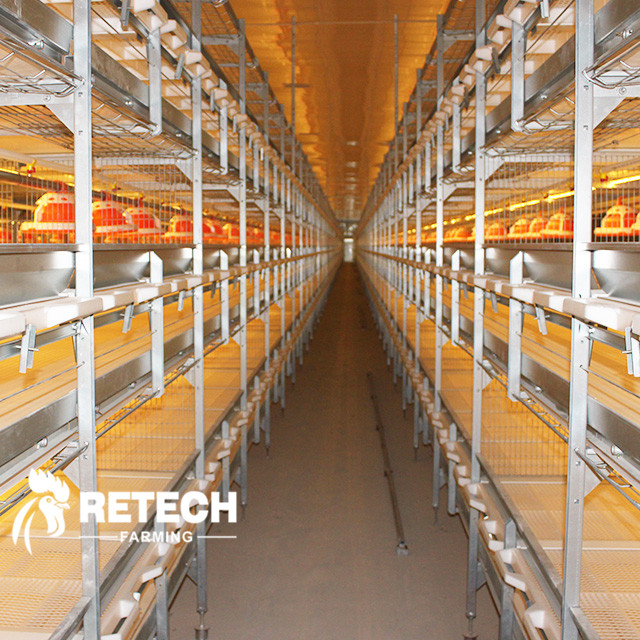The daily management of broilers chicken raising includes nine items: relatively stable temperature, suitable humidity, ventilation, regular and quantitative feeding, appropriate lighting, uninterrupted drinking water, sanitation and epidemic prevention and medication, observation of chickens, and feeding records.
The quality of these details work directly affects the breeding performance.
1. Relatively stable temperature
Temperature refers to the degree of hot and cold. The body temperature of an adult chicken is about 41°C, and the body temperature of a newborn chick is about 3°C lower than that of an adult chicken until it is close to an adult chicken after ten days of age. When we say the temperature is high or low, we refer to the relative high and low, that is, the indoor temperature is compared with the standard temperature of the day.
The effect of temperature on broilers and the solution: For fast-growing broilers, the temperature is too high, too low or temperature mutation will affect its growth rate, especially now the broiler after the replacement is more sensitive to temperature mutation. Broilers can grow quickly and healthily only if the broiler house provides a relatively stable temperature to maintain their own necessary energy.
During the brooding period, due to the low body temperature of the chicks, the whole body is covered with fluff, which cannot be used for heat preservation, and it is difficult to adapt to the changes in the external temperature. It directly affects the chick’s thermoregulation, exercise, feed intake, drinking water, and feed conversion rate.
It is best to maintain the standard temperature for the first ten days of brooding, and the temperature difference between day and night should not exceed ±1 °C. If the temperature is too low, it will cause poor yolk absorption, indigestion (overfeeding), cause respiratory diseases, and increase chest and leg diseases; when the temperature is too high and the humidity is low, it will drink too much water, resulting in diarrhea, reduced feed intake, and growth. Slow down.
Ventilate in the case of heating, pay attention to heat preservation when ventilating, and control the temperature difference not to exceed 3 °C. In the later stage of rearing, especially in the two days before exiting the grid, it is necessary to keep the indoor temperature and the outside temperature relatively consistent according to the season, that is: the external ambient temperature is high, the indoor temperature is slightly higher, the external ambient temperature is low, and the indoor temperature is slightly higher. Low.
This can reduce the death loss caused by stress on the way of the broiler chicken. In short, ambient temperature, ventilation and humidity control the indoor temperature, and temperature plays a key role in the healthy and rapid growth of chickens.
Changes in temperature can cause stress and cause a variety of diseases. The temperature determines the feed conversion rate and disease resistance: high temperature, high feed conversion rate but poor disease resistance; low temperature, low feed conversion rate but strong disease resistance.
This is to grasp the “degree” according to the actual situation, choose the best temperature in different seasons and different periods, and deal with the contradiction between the temperature and the ratio of feed to meat, so that the broiler chicken can grow quickly and healthily.
The most important factor affecting the temperature is the change of the weather, so we must keep abreast of the weather changes at any time, and keep the weather conditions of the week in mind through the weather forecast.
Post time: Jun-13-2022








